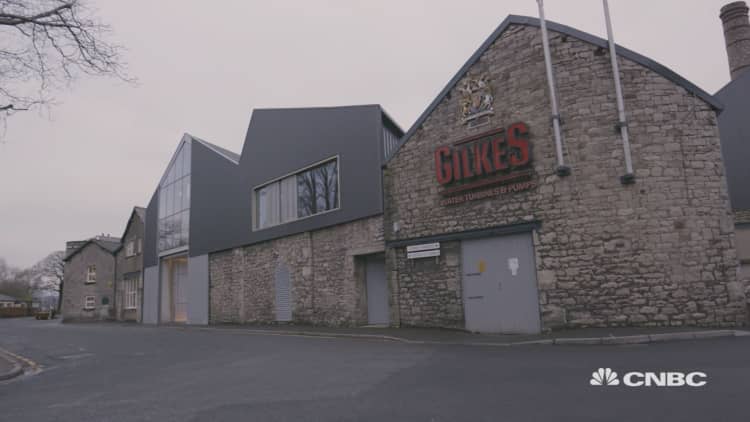
The Lake District, in England, is famed for its deep waters, idyllic views and serenity.
Located in the market town of Kendal – seen as a gateway to the Lakes – Gilkes specializes in the development of hydropower projects.
Here, some members of their team give us a guide to the nuts and bolts of setting up a system.
Water, turbines and power
"The theory behind hydropower is that we ultimately harness the energy available in the water, that's both in terms of the pressure in the water and the flow rate or the movement of the water," Alan Robinson, research and development manager at Gilkes, told CNBC's Sustainable Energy.
Turbines are crucial components of hydropower systems. Robinson went on to describe two types – reaction turbines, and impulse turbines.
"In a reaction turbine the runner is fully submerged, it harnesses the energy of the water passing through the runner, that's both in terms of its pressure and the kinetic energy available," he explained.
"Impulse turbines are often used on high head or high pressure schemes, they'll take the available energy in the water, convert that into a high velocity jet, which then strikes the runner, or wheel," he added.
According to French utility EDF, high head schemes are typically located at high altitudes, making the most of the big difference "between the dam which holds back the water and the plant where electricity is generated."
Access and materials
By their very nature, hydropower sites can sometimes be hard to get to. "One of the problems that we face – mainly on site – is site access," Andy Eaton, Gilkes' international hydro sales manager, said. "These sites are very remote, and the powerhouse is usually located down by the river."
As well as access to sites being an issue that needs to be considered, materials used and research and development need to be spot on too.
"Our scope of supply uses a number of different materials: mild steel, stainless steel and aluminium bronze," Robinson said. Composite materials were also used, he added.
In terms of R&D, Robinson said that validating efficiency gains was a challenge. "We do that using CFD, which is computational fluid dynamics, a simulation tool, but also physical testing as well, to fully validate that gain," he said.
The test of time
Eaton said that some machines had been running for more than 100 years. Little tweaks are required now and then.
"Recently we've carried out some upgrading work… of some equipment on a tea estate in Kenya, where they have five machines of ours dating back to the 1920s," he said.
"We haven't really carried out too much mechanically on the turbines, it's just an upgrade on the electrical side of the equipment where over a period of time the software, etcetera, has changed."
Looking to the future, Robinson stressed the role hydropower has to play.
"The sustainability of our planet is in everybody's best interests. Renewable energy plays a massive role in that and hydropower is a significant contributor both historically and moving forward to the future."




